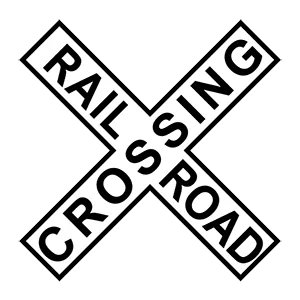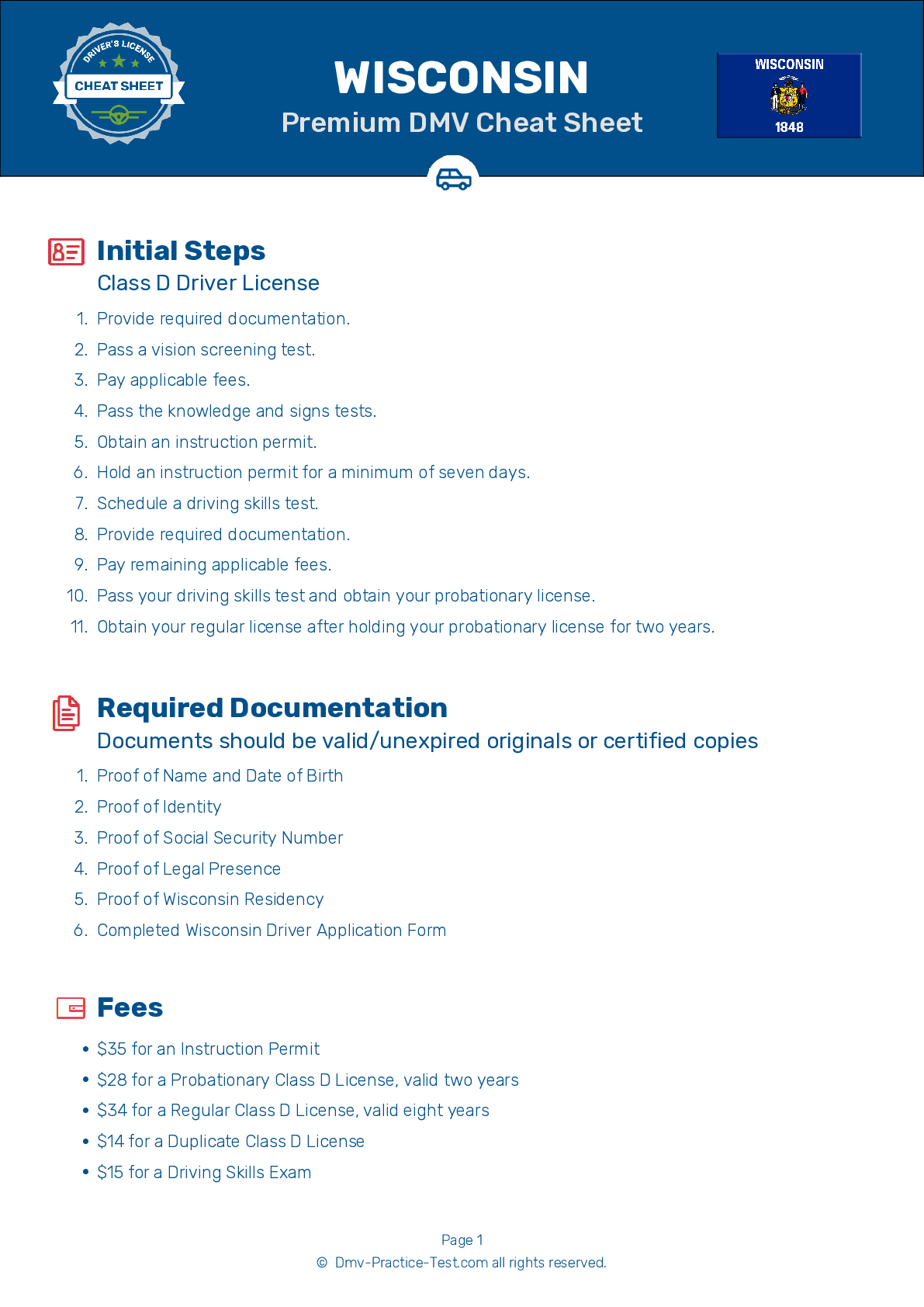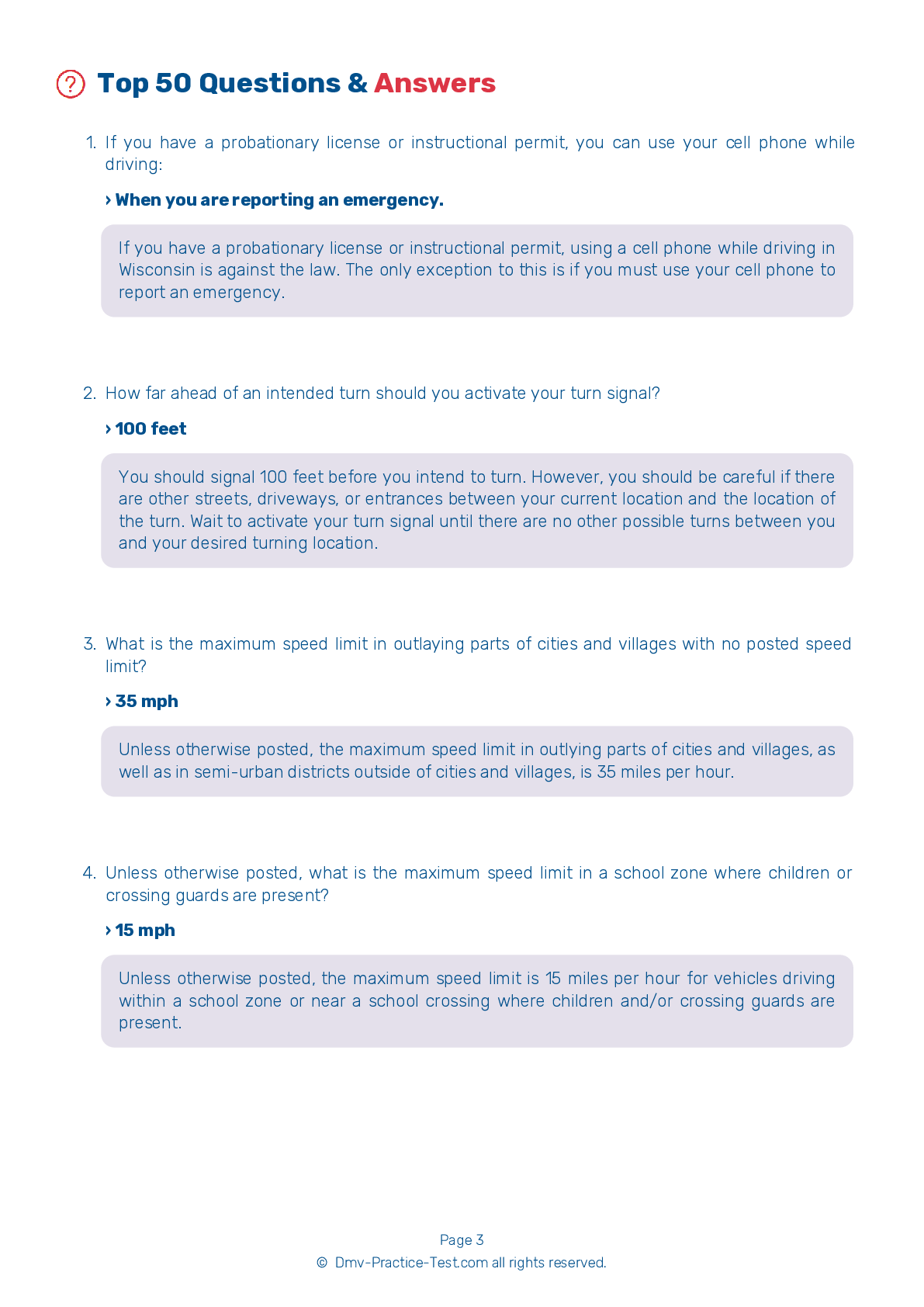FREE Wisconsin DMV Practice Test #22 Page 5 of 7
The Wisconsin DMV practise examinations have been updated for January 2025. It includes questions based on the Wisconsin Driver Handbook's most significant traffic signals and legislation for 2025. Use actual questions that are very similar (often identical!) to the DMV driving permit test and driver's licence exam to study for the DMV driving permit test and driver's licence exam.
On the practise exam, each question gets a tip and explanation to help you remember the concepts. The written component of the official Wisconsin DMV test will include questions about traffic rules, traffic signs, and driving statutes, as well as knowledge from the Driver Handbook.
To obtain a passing grade, you must correctly answer 40 of the 50 questions. Use the practise exam provided by the Wisconsin Department of Motor Vehicles to help you prepare for your instruction permit or driver's licence.
The DMV exam is available in several languages.
Using any kind of testing assistance will result in an automatic fail, and the DMV may take additional action against your driver's licence, so stay away from it.
29 . When you park uphill on a street with a curb:
When parking on an incline where there is a curb, you should turn your wheels sharply to the left, away from the curb. This way, if your brakes fail, your vehicle will not roll into traffic.
30 . When driving on the highway, consistently looking far ahead of your vehicle:
To avoid the need for last-minute braking or turning, consistently watch the road far ahead of your vehicle. By looking ahead and being ready to stop or change lanes if needed, you can drive more safely, save fuel, and help keep traffic moving at a steady pace.
31 . A diamond-shaped sign:
Diamond-shaped signs warn drivers of existing or potential driving hazards. You will usually see these signs in yellow or orange.
32 . At a four-way stop:
At four-way stops, traffic from all four directions must stop. The first vehicle to reach the intersection should move forward first. If two vehicles reach the intersection at the same time, the driver on the left yields to the driver on the right.
33 . You are approaching a railroad crossing and you do not see or hear a train. You must stop:
You must always stop before crossing railroad tracks if flashing red lights are activated, a crossing gate is lowered, a stop sign is posted, a flagger signals you to stop, or a train is visible or so close to the crossing that it would be hazardous to continue driving. If you are unsure if a train is too close for you to safely cross the tracks, stop. Never race a train.
34 . A steady yellow light at an intersection means:
A steady yellow light indicates that a steady red light will soon appear. If you are driving toward an intersection and a yellow light appears, slow down and prepare to stop. If you are already within the intersection or cannot stop safely before entering the intersection, continue through carefully.
35 . This white sign means:





